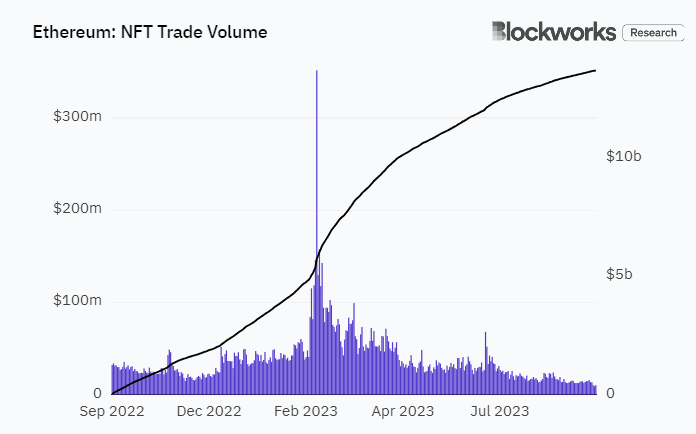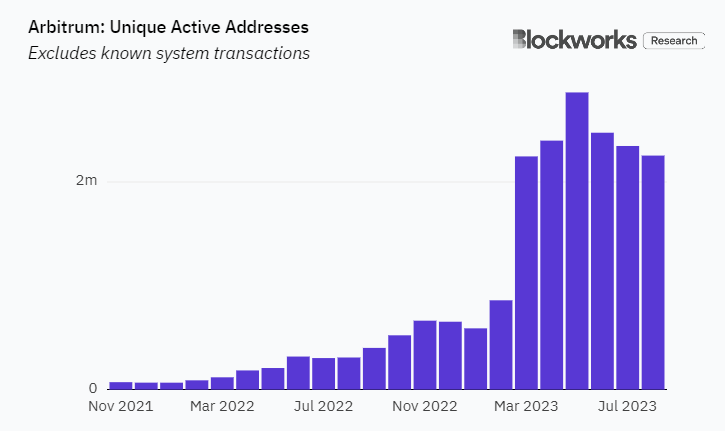As on-chain activity plummets, Ethereum’s blockspace is on track to turn a financial loss for the first time since the Merge, according to Blockworks data.
Data from Blockworks Research’s newly-launched Analytics product shows that Ethereum blockspace has consistently turned a profit since the network’s switch to proof-of-stake consensus in September 2022.
The blockspace profitability metric is calculated by subtracting the total protocol fees paid to validators as well as ether (ETH) reward issuance from total transaction fees.

Source: Blockworks Analytics
From October 2022 to present, only in December 2022 did blockspace narrowly turn a loss, generating $3.5 million in losses — a fraction of the $414 million in gains the protocol has seen so far in 2023.
However, as activity on Ethereum falls, September is shaping up to be the protocol’s first month posting significant losses since proof-of-stake was introduced. Throughout September, Ethereum blockspace has posted only a single profitable day, and as of Monday, has accumulated $15.9 million in losses.
The shift in blockspace profitability coincides with an expansion in ETH’s circulating supply, which is up roughly 8,900 ETH on the month, per data from ultrasound.money.
The declining profitability for blockspace is attributable to declining user activity and falling volumes across multiple on-chain subsectors. Swaps and transfers of popular stablecoins such as USDT and USDC are down as much as 90% from March 2023 highs, and NFT trading volumes in particular are continuing to dwindle.

Source: Blockworks Analytics
While activity on the base layer is shrinking with no clear catalyst to alter the trajectory, a number of Ethereum layer-2 networks are maintaining healthy activity.
Arbitrum and Optimism both maintain sequencer profitability, and while each has seen pullbacks in the number of active addresses on the networks, they remain close to yearly highs.

Source: Blockworks Analytics
 blockworks.co
blockworks.co